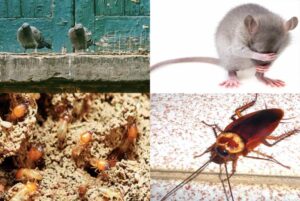Complete Guide: How to Get Rid of Roof Rats
Have you ever experienced a pleasant evening at home, relishing a peaceful moment with a captivating book or an engaging movie, only to be interrupted by the faint sound of tiny footsteps above you?
What if we inform you that these gentle sounds may not be as innocent as they seem, and that roof rats may have chosen your residence as their covert sanctuary?
However, there is no need to panic about the prospect of these unexpected visitors scurrying around. Instead, let us embark on a journey through this comprehensive guide.
Consider it a navigational tool designed to assist you in navigating the intricacies of dealing with these unwelcome intruders, and most importantly, equipping you with the knowledge to bid them farewell gracefully.
What Are Roof Rats?
Imagine these cunning roof rats as unwelcome visitors and agile performers transforming your house into their personal playground. They are not your ordinary rats; they are the nimble Rattus, experts in climbing, and they have chosen your roof as their high-flying sanctuary.
It’s as if they have proclaimed themselves the daredevils of your abode, eagerly exploring every crevice and corner with the enthusiasm of young adventurers.
The term ‘roof rats’ suits them perfectly because they have a fondness for heights. Consider your roof, attic, and other elevated areas as their preferred hangouts, as if they have anointed themselves the rulers of the upper realm of your home.
And do you know why they should be a cause for concern? They are not just seeking a room with a view; they have a devious plan that could turn your peaceful evenings into a wild rodent escapade.
As we delve into this guide, you will uncover the secrets of these sly intruders, and you will have all the knowledge to bid them a swift and trouble-free farewell.
The steps outlined below will demonstrate how to naturally rid your attic of these acrobatic invaders and prevent your yard from becoming their exclusive dining area. Are you prepared to take charge and restore tranquility to your home? Let’s commence.
Detecting the Intruders: Signs of Roof Rats
Time to play detective. Let’s uncover those sneaky roof rats by spotting the signs they leave behind.
Gnaw Marks
Roof rats are little carpenters with razor-sharp teeth. If you notice chewed-up areas, especially on wires, wood, or other surfaces, it’s a sure clue they’ve been busy changing their habitat.
Droppings
Roof rats do not clean up after themselves. If you notice small, pellet-like droppings around your house, especially in isolated corners or along their travel pathways, it’s a dead giveaway that they’re there.
Unusual Noises
These young performers could be chaotic neighbors. If you hear rustling, clawing, or scampering sounds, especially in your attic or walls, it’s probably roof rats performing their acrobatics.
Grease Marks
Roof rats have greasy fur, and this leaves a mark. Check along walls or rafters for noticeable smudges. These marks are like their fingerprints, indicating where they’ve been squeezing through tight spaces.
Nesting Materials
Roof rats have greasy fur, which leaves a trace. Examine the walls and rafters for any visible smudges. Similar to their fingerprints, these traces show where they’ve been cramming themselves into small areas.
Runways
Roof rats are creatures of habit. Check for well-defined runways along beams or wires – these are like their rat highways, showing you exactly where they like to travel.
What Attracts Roof Rats to Your Home?
Roof rats aren’t just randomly choosing homes; there are specific things that attract them. Let’s unveil the secrets of their preferences.
Accessible Food Sources
Roof rats are known for being opportunistic eaters. Food left out in the open, whether in poorly secured garbage cans or pet food bowls, serves as a fast-food outlet for these rodents.
Cozy Nesting Spots
Roof rats seek out a cozy area to call home. Unattended and messy regions in your attic, garage, or storage space offer them with an ideal location for nesting.
Water Sources
Everyone needs a drink, even roof rats. Leaky pipes, standing water in trays under houseplants, or overlooked puddles can be a water source for these rodents.
Hiding Places
Roof rats prefer to stay out of sight, and overgrown vegetation or piled-up firewood provides excellent hiding spots. Tall grass, thick shrubbery, and stacked firewood near your home become ideal shelters for them.
Easy Entry Points
Have you got cracks, gaps, or holes in your home? Roof rats are excellent at finding convenient entry points. Seal up these openings in your home’s foundation, walls, windows, and doors.
How to Get Rid of Roof Rats
Now comes the moment you’ve been waiting for; finally, it’s the time to say goodbye to those unwanted visitors. In this detailed part, we’ll look at some practical rat trapping tips to get rid of roof rats.
You’ll learn about conventional and advanced roof rat traps and how to use rat bait strategically. Our purpose is to provide you with the knowledge and skills necessary to reclaim your area.
Opt for Roof Rat Traps
Roof rat traps are specifically developed with their climbing habits in mind. Place these traps in high-traffic areas frequently visited by roof rats. The distinct design increases the likelihood of capturing them.
Use Rat Bait
Baiting includes the use of enticing food loaded with rat poison. Place these baits strategically so they are accessible to roof rats but out of reach of pets and children. Be cautious with this procedure and adhere to safety requirements.
Seal Entry Points
Close all potential access points to prevent new infestations. Inspect your home for cracks, gaps, and holes, then seal them with steel wool or caulk.
Remove Attractive Food Sources
Keep your surroundings tidy. Clean up spilled food, keep garbage cans closed, and avoid leaving pet food out overnight. By removing food sources, you discourage roof rats from sticking around.
Trim Vegetation
Trimming tall grass, bushes, and overgrown plants eliminates hiding spots. This not only devalues your property but also lowers prospective access points.
Remove Standing Water
Roof rats require water; therefore, repair leaks immediately, ensure good drainage, and get rid of standing water. This deprives them of a valuable resource, making your residence less enticing to them.
Rat BaitUse Natural Predators
Natural predators such as owls and non-venomous snakes can help manage roof rat populations. Installing owl boxes or allowing specific snakes in your yard serves as a natural deterrent.
Employ Peppermint Oil
The smell of peppermint repels roof rats. Soak cotton balls in peppermint oil before placing them in areas where roof rats are active. This natural deterrent can reduce their interest in your home.
Seek Professional Help
When DIY approaches fail, hiring a certified rat trap service in Texas is a sensible decision. The professionals have the necessary skills and gear and frequently apply eco-friendly treatments to manage infestations efficiently.
Conclusion
In the ongoing struggle against roof rats, triumph hinges upon strategic and well-informed action. As you absorb the insights and wisdom from this comprehensive guide, you find yourself armed with the knowledge necessary to reclaim your home from these acrobatic intruders confidently.
However, a beacon of hope emerges for those who seek not just a victory but the pinnacle of safety and efficacy: AlienWerks Pest Management. Picture us as the guardians of your peace, the sentinels against the tiny invaders.
Our expertise transcends ordinary solutions, offering a tailored and precise approach to roof rat removal. With an unparalleled understanding of roof rats’ behaviors and habitats, we navigate the intricate battleground of your home with surgical precision.
So, as the curtain falls on the rat-filled drama in your home, AlienWerks Pest Management steps onto the stage. Transform your home into a haven of tranquility today.





